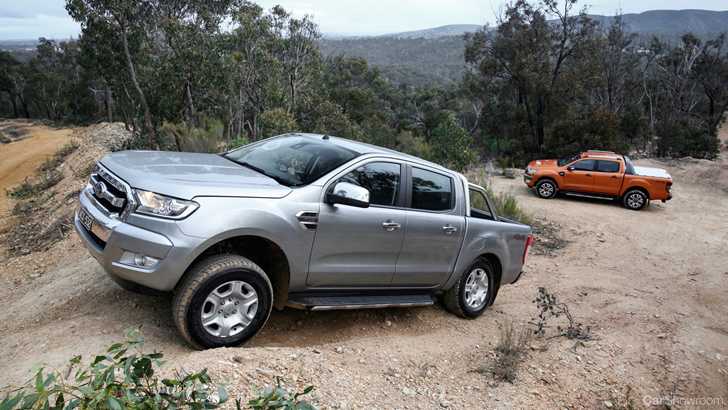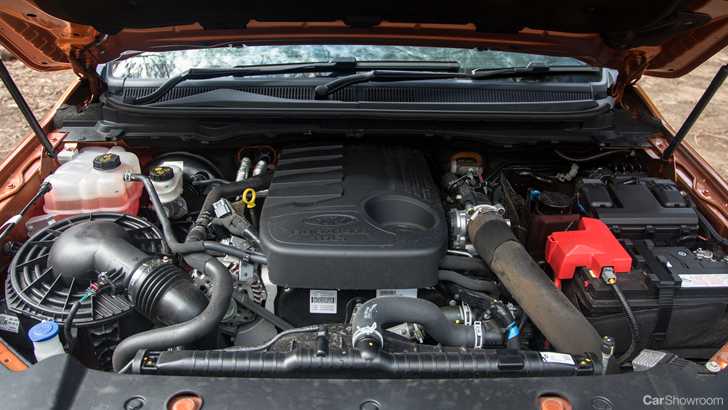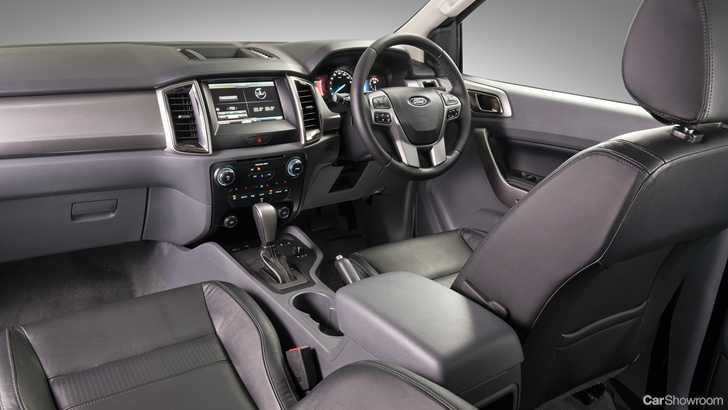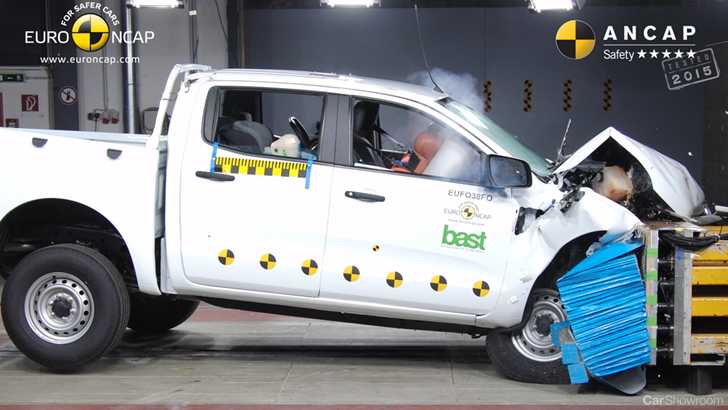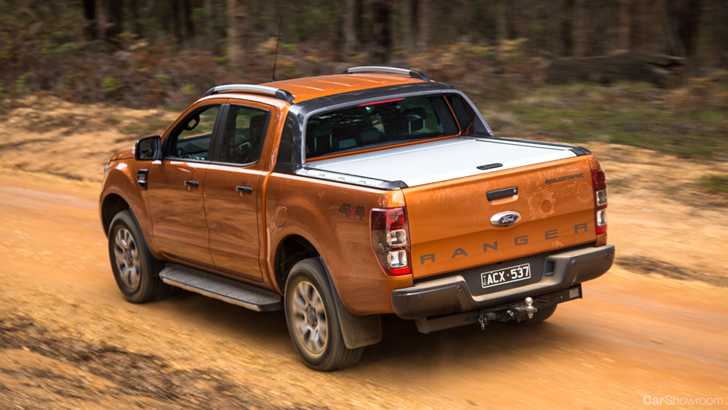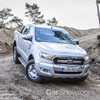The Ranger is rugged and rather popular pick-up that was designed and engineered right here by Ford’s Australian division that was initially introduced in 2010 before undergoing a fairly comprehensive update in 2015.
It’s no surprise that the Ranger is one of the most successful modes in its class, being a consistently strong seller to both commercial and conventional customers, facing off tenacious rivals such Holden Colorado, Mitsubishi Triton, Volkswagen Amarok, Nissan Navara, and of course, the Toyota HiLux.
Available in Australia with a duo of turbodiesel engines as either the XL, XLS, XLT, and Wildtrak variants, the Ranger offers a plethora of options to fit the needs of a wide variety of buyers and uses, from the strictly utilitarian to the lifestyle oriented.
In many ways, the combination of practicality, versatility, power, comfort, off-road ability, and even fuel economy make it the consummate vehicle for a lot of people, which is why more and more former car buyers are choosing a pick-up. It doesn’t hurt that the Ford Ranger is one of the best to drive in this class, being rather car-like in the way it behaves on the road, and makes for an easy transition.
Exterior
“With an unmistakable chrome grille and big, high-mounted headlamps, the Ranger looks much like the muscular North American machines that got the pickup ball rolling,” - CarBuyer
The original 2010 Ranger T6 already was quite a handsome pick-up, looking solid as standard and reasonably stylish when gussied up as the range-topper. It looks utilitarian, sure, but even the base model single-cab benefits from the facelift’s more pronounced front fascia and other visual alterations.
Speaking of which, the Ranger can vary from a two-door Single Cab, a Super Cab with suicide doors and more space behind the front seats, and finally the multi-purpose Double Cab that can carry up to 5 occupants has the most variant options: XLS, XLT and Wildtrak, with wheel sizes ranging from 16-inches to large 18s.
Engine and Drivetrain
“Although having one less cylinder, 85Nm less torque and 1.0 litre smaller capacity than its 3.2 litre sibling the difference in performance is negligible with or without a load.” - CarsGuide
There are no new engines, rather a return of the carry over turbodiesels from the pre-facelift era T6 Ranger. That isn’t necessarily a bad thing as both offer plenty enough power for the pick-up when on the road and on the rougher stuff.
With either option, they can be mated to either a 6-speed automatic or 6-speed manual transmissions that drive either the rear wheels or all four with a locking rear differential, with all 4x4 functions accesses through a dial behind the gear selector, making the Ranger’s considerable off-road prowess easily accessible.
The 2.2-litre four-cylinder Duratorq four-cylinder provides more-than-adequate grunt, quite decent fuel economy, even impressive smoothness, while power and torque is rated at 118kW and 385Nm. The more powerful 3.2-litre unit, only available in Double Cab variants, uses 5 cylinders and generates 147kW and 470Nm but is noticeably gruffer than the smaller block under load.
With the optional Tow Pack with tow ball installed, Ford says the Ranger’s maximum towing capacity is rated at 3,500kg. Payload capacity, however, is better with the 2.2-litre turbodiesel, reaching 1,500kg compared to the five-pot’s 1,355kg maximum.
Interior
“The cabin looks contemporary, and the hard-wearing cloth seats are comfortable, while the rear seats have child-seat anchors and are comfortable enough to sit three blokes across.” - CarAdvice
Depending on which type of Ranger you ultimately select, the cabin can range from a strictly function-driven habitat that’s rather barren of most creature comforts to a decidedly comfortable, even posh one.
It’s second only to the Volkswagen Amarok in sheer quality at the top of the range here, with leather, satin metal accents, contrast stitching, and soft touch materials strewn. There are some areas, though, that disappoint in terms of feel - toward the lower reaches of the cabin - though this is forgivable given that durability is the main priority here, and these materials do seem tough enough to withstand abuse.
The dashboard layout is still quite basic but ergonomically improved, so you won’t find too much of that ‘flair’ some expect to find even in vehicles like this. Nonetheless, it’s still one the best pick-up interiors on sale. Seating position is agreeable, with decently supportive seats and a steering column that raises/lowers and extends to meet you.
The rear seats are a little too upright but otherwise comfortable. Three adults can seat abreast just fine as there’s no issue with leg or headroom, but the ride for rear passengers can get more than little bouncy on more rutted surfaces.
Behind The Wheel
“Ranger feels one of the more capable and steady pick-ups, with little disturbance entering the cabin from smaller imperfections in the asphalt. That said, when the going gets more rutted and uneven, the reverberations can really unsettle…” - Autocar
Much talk has been made by nearly every pick-up manufacturer claiming its product to be the most ‘car-like’ to drive, directly or indirectly, especially with regards to their most expensive variants. Granted, there have been impressive strides in recent years to make these types of vehicles fall within the purview of the practical car buyer as a worthy alternative.
Driving the Ranger, it’s clear that this is one of the better handlers on the road, benefitting perhaps from Ford’s track record of other impressive steerers. Its inherent pliancy over rutted surfaces doesn’t detract from it juggling a sorted chassis (for a pick-up). Body roll is well managed and the steering is light but weights up closer to the centre for a stable track at higher speed, where its refinement levels are also commendable.
Given its ladder-frame platform, there are noticeable areas where the Ranger falters, such as its ride getting unstuck by constant dealings of choppy terrain that upsets the suspension geometry like a resonant frequency. Hand it a more interspersed set of obstacles where it’s handy to have the electronically-controlled 4x4 system set to its low range mode, and it copes with them much in a far more composed fashion, damping the impacts well though not in any class leading manner either.
Safety and Technology
“This model achieved a full five-star Euro NCAP rating when originally tested it in 2012, and now the facelift has added an arsenal of electronic driver aids to improve matters further.” - AutoExpress
When tested in 2015, ANCAP handed the T6 Ranger a 5-star safety rating - an unchanged final score to the original 2011 test conducted by Euro NCAP when this generation of Ranger was introduced. Overall, it scored a very impressive 36.72 out of 37.
All variants get a dual front, side chest, and side head (curtain) airbags and as well as other safety features such as automatic headlights, hill launch assist, and a reversing camera as standard. With the most expensive Wildtrak or the XLT equipped with the optional Technology Package, buyers receive even more kit such as rear collision avoidance, lane keep assist, and even adaptive cruise control.
The in-car tech suite of the Ranger mirrors that of nearly all current new Fords, centring around the much improved SYNC 3 system, manipulated through an 8-inch touchscreen. The new software is far more responsive and easy to use over the older one and includes proper smartphone integration with support for Apple CarPlay and Android Auto. As a whole, the infotainment package here is one of the best in its class, matching the Volkswagen Amarok and far surpassing the Mitsubishi and Nissan in this regard.
Verdict
The Ford Ranger, in this updated 2015 version, deserves its spot in the upper echelons of the pick-up landscape and manages to combine its workhorse-like attributes with genuine everyday usability. However, its edge over the competition by focusing on a more car-like appeal has waned, and rivals are closer than ever to besting it as a total package.
AutoExpress - 4.3/5 - “There are a variety of Ford Rangers, but all offer car-like interiors and plenty of practicality, although economy could be better.”
CarAdvice - 8.5/10 - “Its cabin tech beats the HiLux or BT-50, its safety story and towing capacity outdoes the more premium and rapid Amarok V6, its car-like floating ride and handling is at or near the top of the tree, and its rugged design appeals to more tastes than most.”
CarBuyer - 3.6/5 - “The Ford Ranger is a hugely capable workhorse and high-spec versions make a real alternative to conventional SUVs.”
CarsGuide - 4/5 - “…the smaller XLS is a five-seat genuine one tonner which not only offers a good-looking sub-$50K entry into Ford Ranger ownership but feels just as capable as its larger-engined sibling for less money.”
What Car - 4/5 - “The Ford Ranger might have the same limitations as all pick-ups, but it’s certainly one of the best of its kind available.”

